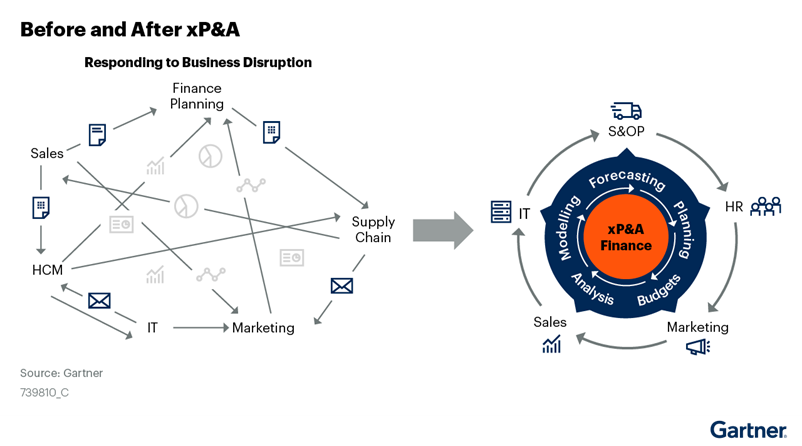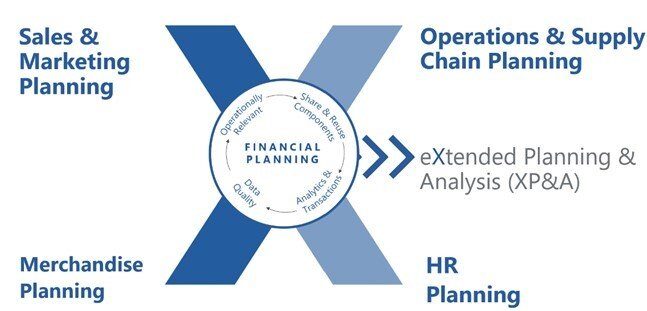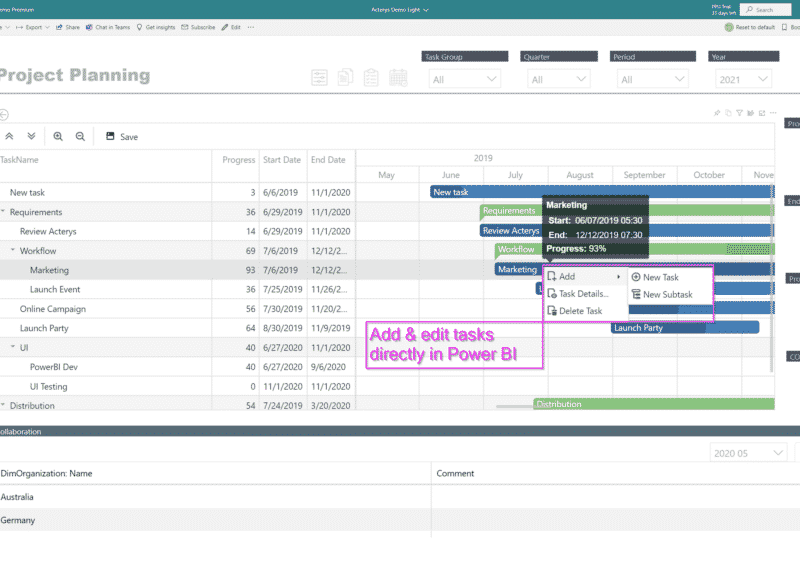
What is xP&A? How Can It Help Your Business?
When it comes to making important decisions, taking the time to plan and analyze is essential. This is especially true when the decision could have a significant impact on your life or the lives of others. By spending the time to evaluate all of your options and consider the possible consequences of each choice, you can make a more informed decision and reduce the chances of unpleasant surprises down the road.
This is particularly important in business settings, where incorrect decisions can lead to financial loss or even bankruptcy. However, careful planning and analysis is also necessary in personal relationships, where miscommunications can cause major rifts. In short, taking the time to think through your choices can save you a lot of trouble in the long run. In summary, this is what constitutes the term ‘extended planning and analysis.’
Let’s learn in detail what Extended Planning & Analysis (xP&A) is and how it can help businesses grow, scale, and profit faster.
What is Extended Planning & Analysis (xP&A)?
The term xP&A stands for “Extended Planning and Analysis.” It is a process used in business to plan, organize, and control the work that needs to be done in order to achieve specific goals. The goal of xP&A is to ensure that all necessary steps are taken to achieve the desired outcome.
“Extended planning and analysis is a process by which an organization can more effectively plan for and respond to changes in its environment.“
Sap.com
By taking a more holistic view of the organization’s operations, extended planning and analysis can help identify potential risks and opportunities that may not be apparent when looking at individual parts of the business.
This information can then be used to make more informed decisions about how to allocate resources and respond to challenges.
Why is xP&A Important?
In order to ensure that a project is successful, it is important to take the time to plan and analyze the situation. This means looking at all of the possible outcomes and developing a strategy that will address them. While it may be tempting to try and rush through the planning stage in order to get started on the actual work, this can often lead to problems down the road. By taking the time to plan properly, you can avoid many of these issues and ensure that your project is a success. That’s why xP&A is crucial for a project’s success.
1. xP&A ensures that a project is completed successfully.
2. By taking the time to analyze all the relevant data, you can avoid costly mistakes and ensure that your project meets all of your requirements and xP&A helps you visualize that.
3. Extended planning and analysis allows you to identify potential problems and find solutions before they become a problem.
4. Well-planned projects are less likely to go over budget or be delayed and xP&A tools help you see that through.
5. By taking the time to plan properly, you can put your business in a much better position to succeed.
Brief Origins of xP&A
The origins of the term “extended planning and analysis” are unclear, but it is thought to have originated in the early 1990s. The term may have been coined by management consultants who were looking for a way to describe the new, more complex planning processes that were emerging at the time.
The term is often used in business and academic circles to describe a process of taking a more holistic and detailed approach to planning and analyzing various aspects of a given situation or problem.
This approach can involve breaking down complex problems into smaller, more manageable parts, and then examining each part in detail in order to develop a comprehensive solution.
Extended planning and analysis can also help identify potential risks and opportunities associated with a given situation, and can allow for more effective decision-making.
How do you build an xP&A Process?
There is no one-size-fits-all answer to this question, as the best way to build an extended planning and analysis process will vary depending on the organization and its specific needs. However, some tips on how to build an effective process include:
1. Establish clear goals and objectives for the process.
The planning and analysis process should be designed to help the organization achieve its goals and objectives, so it is important to have a clear understanding of what these are.
2. Define the key steps in the process.
The steps in the process should be clearly defined and organized in a logical order, so that they can be followed easily and produce results that are useful and actionable.
3. Make sure the process is tailored to the organization’s needs.
The planning and analysis process should be customized to fit the specific needs of the organization, so that it can be effectively used to achieve its goals.
4. Use appropriate tools and methods.
The tools and methods used in the planning and analysis process should be appropriate for the type of data that is being analyzed.
5. Train staff on how to use the process.
Staff who will be using the process should be trained on how to use it effectively so that they can get the most out of it.
Five Benefits of xP&A
It is often said that the key to success is planning and preparation. This is certainly true in business, where careful planning and analysis can help a company avoid pitfalls and capitalize on opportunities. Extended planning and analysis can help businesses identify potential problems and solutions, assess the risks and rewards of different courses of action, and make well-informed decisions that will help them achieve their goals.
In addition, careful planning can help businesses manage their resources more efficiently, optimize production processes, and improve customer service. By taking the time to plan carefully and thoughtfully, businesses can ensure that they are making the most of their time, money, and other resources. Ultimately, this can lead to a more successful and profitable business.
Here are some of the benefits of xP&A.
- xP&A Fosters Agility
Extended planning and analysis foster agility because they allow for a more comprehensive understanding of the situation at hand. This enables quicker and more effective reaction to changes in the environment.
- xP&A provides a holistic view of your organization
Extended planning and analysis provides a holistic view of your organization. By taking into account all aspects of your business, you can develop a plan that is tailored to your specific needs. This comprehensive approach helps ensure that your plans are realistic and achievable.
When creating a plan, it is important to consider the following factors:
- 1. The current state of your business
- 2. Your goals and objectives
- 3. The resources you have available
- 4. The competitive environment
- 5. The risks and opportunities associated with your business
- 6. The timeframe for implementation
- 7. The necessary steps to put the plan into action
- 8. The people who will be responsible for carrying out the plan
- 9. The costs and benefits of implementing the plan
- 10. The monitoring and evaluation process
By taking all of these factors into account, you can develop a plan that is truly tailored to your organization’s unique needs.
- xP&A promotes collaboration and accountability
Extended planning and analysis can promote collaboration and accountability among team members. By taking the time to plan out the project in detail, team members can better understand their individual roles and the overall goal of the project. This can help to prevent misunderstandings and ensure that everyone is working towards the same goal. Additionally, by tracking progress and sharing updates regularly, team members can be held accountable for their contributions. This helps to ensure that tasks are completed on time and that everyone remains responsible for meeting the project goals.
- xP&A enables scaling
Extended planning and analysis enables scaling. By taking the time to understand your needs and plan accordingly, you can ensure that your business can grow without compromising quality or customer satisfaction. By carefully mapping out your goals and strategies, you can create a foundation that can support future growth.
- XP&A provides a single source of truth
One of the benefits of using extended planning and analysis is that it provides a single source of truth. This means that all stakeholders can access the same information, which helps to ensure that everyone is working towards the same goal. Additionally, having a single source of truth makes it easier to track progress and identify any potential issues.
How to Integrate xP&A with ERP
Integrating extended planning and analysis with ERP can be a challenge, but it is worth the effort. The first step is to identify the areas where extended planning and analysis can provide the most value.
Once you have identified these areas, you need to work with your ERP vendor to make sure that the necessary functionality is available. You may also need to customize your ERP system to meet your specific needs.
Once the integration is in place, you need to make sure that everyone in your organization understands how to use it. Training is essential, and you should also make sure that the system is easy to use. Otherwise, people will not be able to take full advantage of the benefits that extended planning and analysis can provide.
Is xP&A Better than FP&A
There is no definitive answer when it comes to deciding whether xP&A is better than FP&A. However, there are certain advantages that xP&A has over FP&A. For example, xP&A can provide a more detailed analysis of a company’s performance than FP&A. Additionally, xP&A can help identify areas for improvement and provide specific recommendations on how to improve a company’s performance.
How Power BI Helps in Extended Planning & Analysis?
Power BI is a powerful business analytics tool that can help organizations extend their planning and analysis capabilities. With Power BI, users can create custom reports and dashboards that provide insights into key business metrics. Additionally, Power BI can be used to build models and simulations to help organizations plan for the future. Thanks to its powerful data visualization capabilities, Power BI can help organizations quickly identify trends and patterns in their data. This can help organizations make better decisions about their business operations.
How Can You Improve xP&A with Power BI?
There are several ways that you can improve the extended planning and analysis process with Power BI.
- One way is to use the built-in features of Power BI to create interactive dashboards and reports. These dashboards and reports can help you to track progress on your projects and analyze data in more depth.
- Another way to improve the extended planning and analysis process with Power BI is to use the data- shaping features of the tool.
- You can use these features to clean up your data, merge data sources, and create calculated columns. This can help you to get a better understanding of your data and make better decisions based on that data.
Using Acterys for Implementing xP&A in Power BI
xP&A can be a great way to improve the performance of your business by visualizing through Power BI solutions. By using Acterys, you can get the templates and resources required to ensure superior performance and scalability when loading and processing data. Additionally, Acterys can help you reduce the time it takes to load data into Power BI, so you can get started analyzing your data faster.



